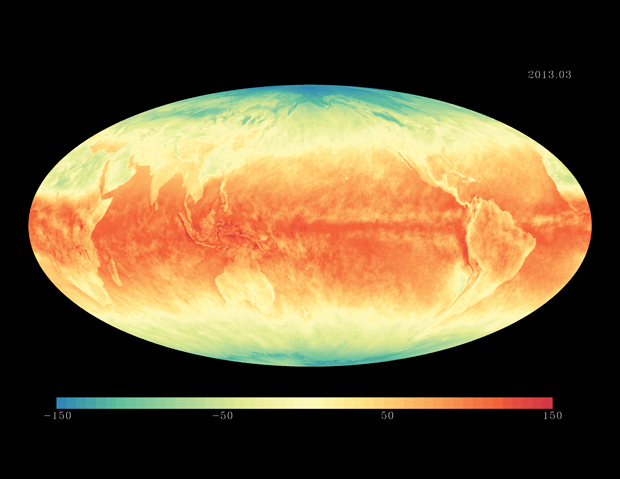Since the turn of the century, surface temperatures on Earth have continued to increase, but at a slower rate than between 1985 and 1999. This is despite increasing greenhouse gas emissions due to human activity. Consistent with the steadily increasing strength of the greenhouse effect, Allan et al. find that heating of the planet—measured as the difference between the amount of sunlight absorbed by Earth and the longwave radiative energy emitted to space—was greater between 2000 and 2012 than during the earlier time period, 1985−1999, despite the slowing rate of surface warming.
The authors explain that this means energy is continuing to accumulate in the oceans even though there has been a measurable dip in the rate of global surface warming since the turn of the century. Their finding adds to evidence implicating energy redistribution within the ocean as an explanation for why Earth’s surface temperatures are increasing at a slower rate now compared to 30 years ago.
The researchers obtained their results through a combination of data from satellites, atmospheric reanalyses, and climate model simulations. They suggest that the lower heating effect before 2000 could only partly be explained by the eruption of Mount Pinatubo in 1991, which injected small particles called aerosols high into the atmosphere, reflecting more sunlight back to space and causing the planet to temporarily cool.
Despite an increase in the overall warming rate, data indicate that surface warming on Earth has decreased. Explanations include changes in the Pacific Ocean associated with El Niño and La Niña events. How quickly the deep oceans take up heat is a significant uncertainty in climate change models, and the authors suggest that there is still a gap in understanding the mechanisms linking ocean heat uptake, circulation changes, radiative forcing, and surface temperature. Bridging this gap will improve models’ capability to predict the climate’s sensitivity to changes in radiative forcing. (Geophysical Research Letters, doi:10.1002/2014GL060962, 2014)
—Jessica Orwig, Writer
© 2014. American Geophysical Union. All rights reserved.
© 2014. American Geophysical Union. All rights reserved.

